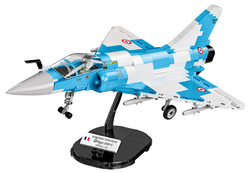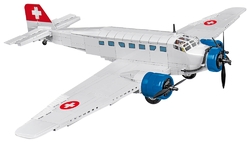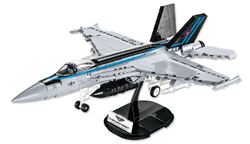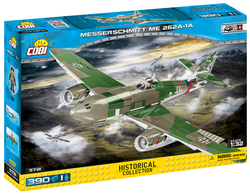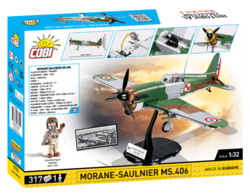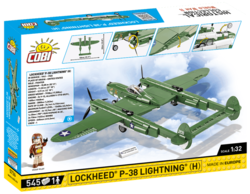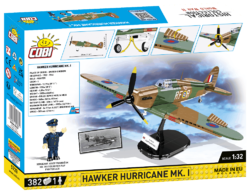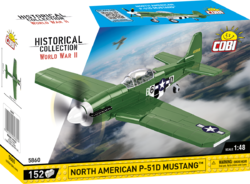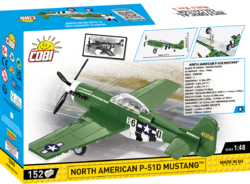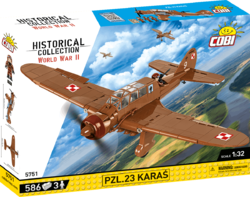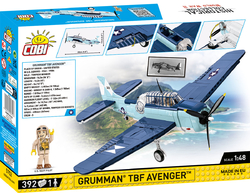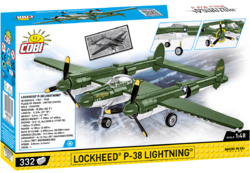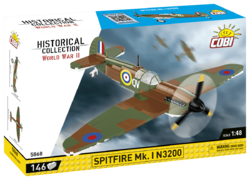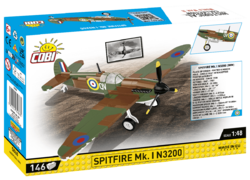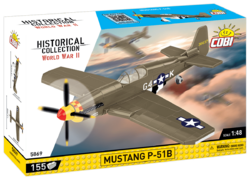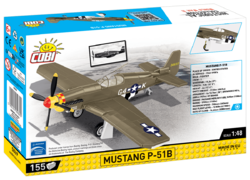Kit of the Russian YAK-3 fighter plane in the camouflage of the Soviet Air Force. The assembled model has a rotating propeller and removable landing gear legs. 1:48 scale models bring a lot of joy and more shelf space. Suitable for beginner builders.
Show more
0 %
(0 Ranking)
444 Kč
pcs
Add to Cart
In stock - ready to ship (2 pcs)
| List Number: | COBI-5862 |
| EAN: | 5902251058623 |
| Warranty: | 24 months |
| Manufacturer: | COBI |
| Loyalty Points: | 3 |
| Price excluding VAT: | 367,20 Kč |
Description
Parametres
Files and Links
Discussion
Reviews

You know that:
- The founder of the design bureau, Alexander Yakovlev, made many trips to England, Italy and Germany before World War II to gather the information and knowledge necessary for the design and development of modern high-performance aircraft.
- The Yak-3 was created in 1942 by gradually improving the predecessor of the Yak-1. The machine was lightened, fitted with a new, more powerful Klimov engine, and the aerodynamics of the airframe were redesigned.
- The result was a light and agile fighter aircraft that was a troublesome adversary for German machines. The first flight took place on February 28, 1944.
- Flight tests confirmed the aircraft's excellent characteristics. The Yak-3 was one of the smallest and lightest fighters of World War II.
- However, even the Yak-3 was not without its flaws. The short fuselage structure caused longitudinal instability at low speeds, which could be managed by precise piloting. Much worse were the defects caused by a phenomenon called "Russian shlendrian". Many of the pieces produced had plywood covers attached so poorly that they separated when the aircraft was pulled out of a dive, but only if the pilot succeeded in this manoeuvre as the pneumatic control surface control system suffered from frequent failures. Despite all these shortcomings, the Yak-3 was one of the best aircraft produced in the USSR. The aircraft was popular with both pilots and ground personnel.
- The German Luftwaffe had a very different view of the Yak-3. In an air battle on July 17, 1944, there was a dogfight between 24 German aircraft and 18 Yak-3s. The result was 15 German aircraft shot down with the loss of 1 Yak.
- In response to the crushing German defeat, the Luftwaffe issued a series of regulations that, for example, prohibited aerial combat with Yakovlev machines at altitudes less than 5,000 meters.
- In various versions, 4,848 were produced at factories 292 and 31.
Technical parameters:
- dimensions: wingspan 9.2 m, length 8.5 m, height 2.42 m
- empty weight 2 123 kg
- take-off weight 2 692 kg
- power unit twelve-cylinder Klimov VK-105PF-2 with 948 kW
- maximum speed 649 km/h
- maximum flight level 10 800 m
- climb rate 19 m/s
- range 648 km
- armament 1x 20 mm ŠVAK cannon + 2x 12.7 mm UBS machine gun
From the memoirs of the 91st Guards Fighter Division pilot Alexander Koldunov:
"The Yak-3 was my favourite aircraft. It was a small and elegant machine that had great flight characteristics. I was able to fly it with great confidence and self-assurance. It was like a second skin to me."
Assembly instructions
| Number of figurines | 0 pcs |
|---|---|
| Version (series) | 09/2023 |
| Number of pieces | 140 pcs |
| Scale | 1:48 |
| Dimensions after assembly | 20 x 18,5 x 9,5 cm |
| Package weight | 200 g |
| Box dimensions | 27,5 x 18 x 6 cm |
| Recommended age | 6+ |
| Contains luminous blocks | No |
| Material | Plastic |
| Collection | World War II |
| Compatible with other brand of kits | Yes |
Discussion is empty.
There is no review for product yet


































